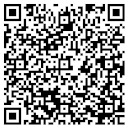That the Indian startup ecosystem is considered among the top 5 in the world by consulting giants Bain and Co. should not come as a surprise if you’ve been paying attention to the underlying numbers.

Indian Software-as-a-Service (SaaS) startups reported astronomical figures in 2021 – almost three times the previous year’s value – raising a record $4.5 billion from investors swayed by the sector’s larger market size, easier access to capital and trends of continuous innovation.

That investment in SaaS today stands at an annual growth rate of almost 170% whilst accounting for almost 8% of the overall venture capital and private equity deal value in India. Both early-stage (85% higher) and later-stage companies (20% higher in Series D+ funding rounds) have recorded marked increases in average value of seed rounds when compared to 2019.
A report from Bain and Co. also found that 2021 had “six SaaS unicorns being valued at over a billion dollars or more. This was as many as the last two years put together, indicating an increased momentum in the space as they address global markets, predominantly in the US and Europe.”
In August 2021, MindTickle, for example, became the third Indian SaaS firm to enter the unicorn club in the year. The startup announced a $100 million funding round by Japanese investor SoftBank, bringing it to a valuation of $1.2 billion.
Value Creation in India’s SaaS transformation
Maturing startups proving scalability has been the major driving factor in boosting investment in the initial stages of funding as well. 2021 saw almost 35 SaaS startups manage over $20 million worth annual recurring revenue (ARR) – up almost seven times over the past five years. Bain and Co. reports the following ways in which this startup ecosystem is driving value creation in India:
- Capital efficiency: Indian SaaS startups have reported very high ARR-to-funding ratios – very much in line with (and sometimes even outperforming) their US counterparts.
- Exit Growth: “The number of Indian SaaS exits increased 100%, from 6 in 2018 to 12 in 2021, with the Freshworks initial public offering (IPO) initiating a new wave of exits.”
Freshworks, a Chennai-based unicorn is known for the ‘extraordinary’ CRM solution it offers to its customers. It is worth $6 billion at the time of writing.
- Talent pool creation: Indian SaaS startups currently employ more than 62,000 professionals in India with an array of SaaS-relevant skills and competencies.
- Cascading effects: Bain and Co. reported that over 250 new startups currently employing over 5000 professionals had been created by former employees of the Indian SaaS ecosystem.
This wave of value creation has boosted the following major sub-sectors of the current Indian SaaS ecosystem, currently boasting an array of several noteworthy early-stage companies in:
- Horizontal business software, including events tech, conversational AI, HR tech, enterprise collaboration etc.
- Vertical business software, such as in healthcare tech, logistics tech, edtech and e-commerce
- Horizontal infrastructure software, like in cybersecurity, DevOps, data management and observability, etc.
The Great Attrition
The word of 2021 has been ‘churn’.
Employee attrition rates in SaaS startups in India rose almost 40% year-on-year in 2021, with several startups having to replace as much as one-fourth of their entire workforce in a single year, according to investors and founders speaking to Moneycontrol.
According to Moneycontrol, “Indian SaaS startups have been growing at a dizzying pace. They have raised money at valuations 2-3 years ahead of plans and have mostly never looked better.” However, employees across verticals such as engineering, product, marketing and sales have been leaving in droves, with attrition rates as high as 50% for new employees who had joined in the past 18 months or so.
Experts opine employees have been “struggling to feel comfortable or fit into global companies while working from home and (have been) lured by quick pay increases from other startups, a chance that may not have been available a few years ago.”


